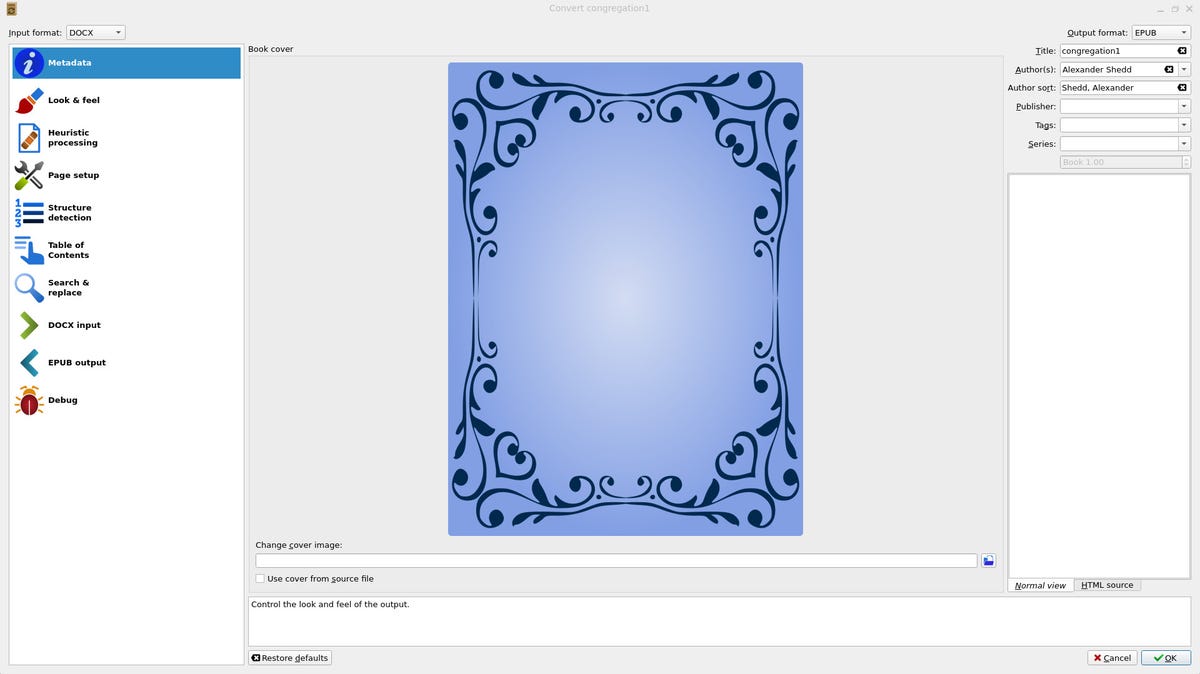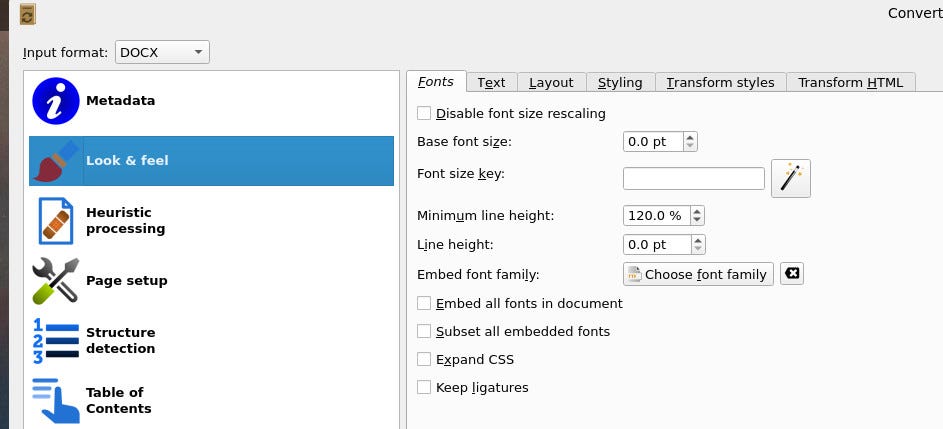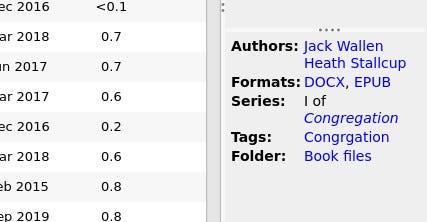Pekic/Getty Images
I’ve written over 50 novels, some of which have been traditionally published and some of which have been published independently. For this reason, I had to spend a lot of time converting documents into a format accepted by player platforms such as Amazon or Barnes & Noble.
When I first started down this path, it was no easy feat. In fact, I had a little trouble. I was doing my best to convert the document to the required format, but I realized that the big machine I was submitting it to was rejecting the file.
Everything changed when I discovered Caliber free software. With this free, cross-platform, and easy-to-use app, I could quickly and easily take a document or HTML file and convert it to many file types, such as EPUB, MOBI [le format d’Amazon]and PDFs. Once converted, these files can be used to submit books to any retailer or share them with readers, customers or consumers.
Caliber is available for Linux, MacOS and Windows
Of course, converting documents to e-books isn’t just for authors. Electronic books can come from bulky documentation or very long essays: these documents or articles in portable files can thus be easily transported and consulted on an electronic book reader.
I’ve converted corporate documents into e-books and turned long documents into a form that’s easier to read on the go. Whatever the goal, you’ll need a tool that makes conversion easy. For me, that tool is Caliber.
Caliber is available for Linux, MacOS, and Windows and works the same regardless of platform. You can download an installer for your platform of choice from the Caliber download page.
Once the software is installed, you are ready to convert.
How to use Caliber to convert a file to an eBook
The only things you will need are Caliber and a .docx or .html file to convert. I find both file types work well, so you can use whichever is easier for you to create. I highly recommend making sure the source file is laid out exactly the way you want it to be.
For example, ensure that all chapter headings are marked either by the tags [de hiérarchisation] h1 or h2 (unless you absolutely have to use h3) and the text uses justified alignment. You should also use a font like Verdana. If you don’t have this font, you can use a sans serif, Helvetica, Lucida Sans, Calibri, or New Times Roman font.
1. Add a new book
The first thing to do is to open Calibre. Once opened, click “Add Books” in the main window.
From the file picker, navigate to the folder containing the document you want to convert, select it, and click OK.

You can convert a single book or perform batch conversions in Calibre. Jack Wallen/ZDNET
2. Open the Convert Book wizard
In Caliber’s main window, select the file you want to work with and click convert books. A new window will open where you can customize the look and layout of the converted file. The first thing to do is click on the drop-down menu Output size in the upper right corner. Select the desired format (EPUB or MOBI, for example).

If you already have the book cover, be sure to add it by clicking the folder icon associated with Edit Cover Image. Jack Wallen/ZDNET
3. Change the presentation
Then click on the “Appearance and Presentation” tab on the left sidebar.
In this window you can configure fonts (disable font resizing, font size, minimum line height, font family), text (input character encoding, text justification, smart punctuation, non-smart punctuation ), layout (remove spacing between paragraphs, insert blank line between paragraphs, linearize tables), style (additional CSS, margins, padding, floats, colors), transform styles (add rules), add rules to modify HTML styles. For me, here’s what I’ve always done:
Texte : Améliorer la ponctuation.
Mise en page : Supprimer l'espacement entre les paragraphes.

In general, I only deal with the “Appearance and presentation” and “Structure detection” sections. Jack Wallen/ZDNET
4. Configure structure detection
Then click on the tab Structure detection. In this window, find “h1” and “h2” in the section Detect chapters at the top. If your document uses h1 or h2 for chapter headings, you don’t need to change anything.
However, if your original document uses, for example, h3, you will need to modify one of these entries for Caliber to detect them.

Be sure to match the Chapter Detection section with the heading style you used in the original document. Jack Wallen/ZDNET
5. Convert the book
You can browse the other sections, but these two are the most important to me. If the source file is already formatted correctly, you shouldn’t have to do too much manipulation.
Click OK and the conversion will begin. When the conversion is complete, you will find the new e-book file in the section by right-clicking on it and then choosing Open book folder. If all goes well, you can submit the file to whom it may concern.

A successful conversion! Jack Wallen/ZDNET
And that’s all there is to converting documents to e-books with Calibre.
Source: “ZDNet.com”
